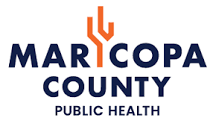Teen pregnancy is an important public health indicator. Having a baby as a teenager impacts the mom, the dad, the baby and the whole community. Teen parents often don’t finish high school which, in turn, reduces their ability to financially take care of their newborn and results in increased health care, foster care, incarceration, and lost tax revenue nationwide. It’s also a key driver of inter-generational poverty, which comes with a cascade of poor public health outcomes.
Here’s a link to the CDC’s latest Birth Data for 2020 (National Vital Statistics Reports Volume 70, Number 17, February 7, 2022) which includes the teen birth rate. Arizona’s teen birth rate decreased 10% in the last year. In fact, since 2010 the Arizona teen birth rate has dropped more than 64%… from 41.9/1000 in 2010 to only 16.6/1000 in 2020.
Table B: National Vital Statistics Reports, Vol. 61, No. 1 (8/2012) vs. Table 8 National Vital Statistics Reports Volume 70, Number 17, February 7, 2022
There are lots of theories as to why the teen birth rate is dropping. The share of teens using some form of highly effective contraceptive methods is increasing. The share of sexually active female teens who have used emergency contraception (e.g., the morning-after pill) rose from 8% in 2002 to 23% in 2011-15. And a Centers for Disease Control and Prevention analysis found that the use of long-acting reversible contraceptives such as IUDs and implants rose from 0.4% in 2005 to 7.1% by 2013. It is most certainly higher than that today.
See Previous Posts:
If Roe is overturned and ARS 13-3603 becomes the law of the land, abortion will no longer be an option for women that become pregnant and are unprepared for the financial and other responsibilities of becoming a parent.
A key question then becomes… will state government step up and provide additional safety net services to support these new families? You have to say Arizona doesn’t have a strong track record in that regard.


